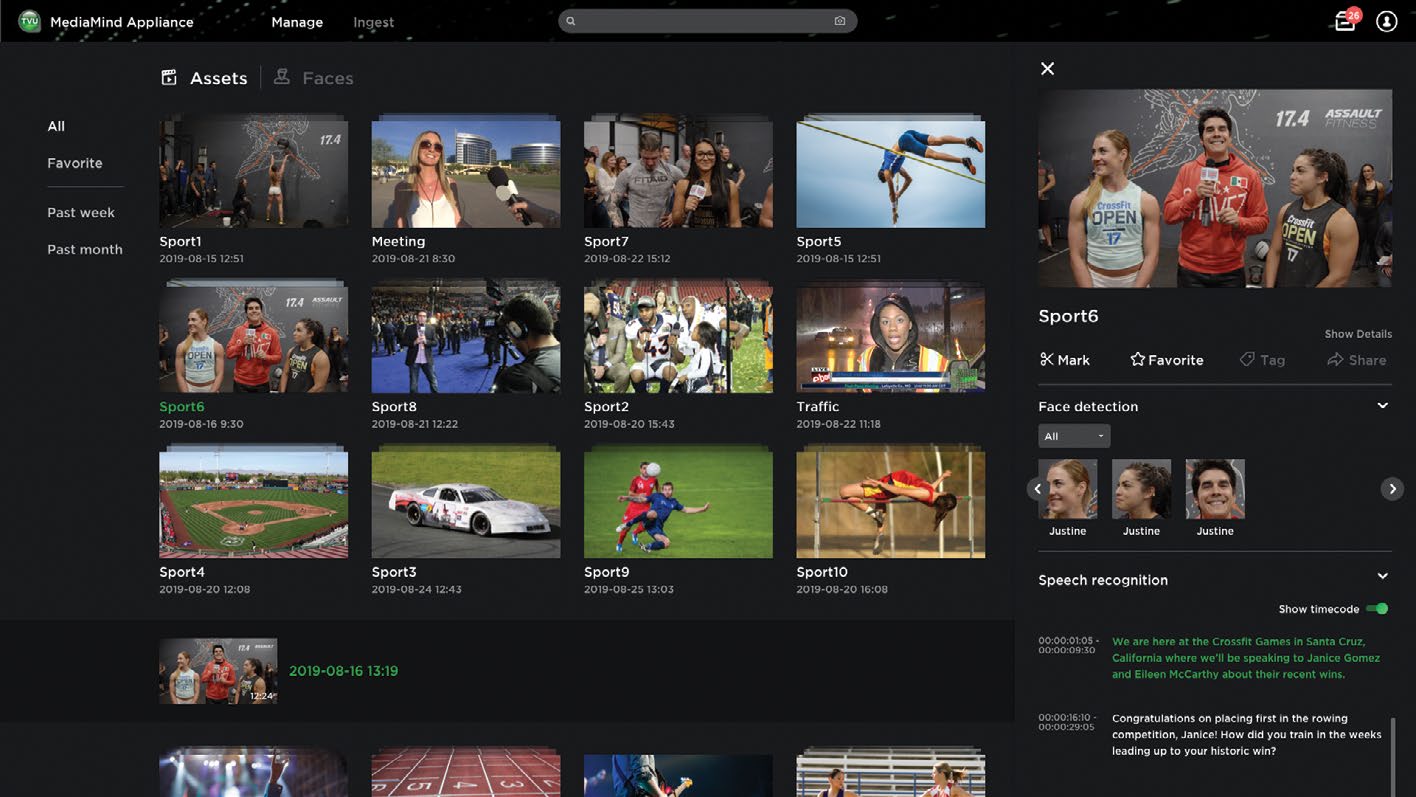AI Gaining Traction in Media Supply Chains
OTTAWA—Artificial intelligence (AI; which includes the subset known as machine learning) is making its way into next-generation media supply chains; speeding up outcomes while reducing workloads for human operators. Here’s a snapshot of what’s being done today, and a look at how close AI actually is to supplanting humans in supply chain management.
SPEED UP SEARCH

Sifting through footage is one of the biggest time-wasters for video editors, but it’s a task many face as they try to serve content to many platforms; be they broadcast, web or mobile.
TVU Networks has harnessed AI to speed up this process through its Media-Mind Service, a smart media supply chain platform that works with an on-premises MediaMind appliance, using facial and speech recognition AI engines to create time-based metadata. Reporters, editors, and producers are able to automatically discover the relevant clips in their video production system through the integration of MediaMind’s API or TVU Search web portal based on the story they are working on.
“In the old way of doing things, editors could spend up to two hours searching through footage to create 10 second clips for mobile phone viewers,” said Paul Shen, TVU Networks’ founder/CEO. “With time-based indexing and real time searching technology, MediaMind can reduce production time of these clips down to just five minutes. This has actually been achieved by one of our customers using our AI.”
FASTER DISTRIBUTION

Signiant’s SaaS (Software as a Service) platform, which underpins the company’s Media Shuttle and Jet products, is currently being used by more than 500,000 users around the globe to move petabytes of high value video content every month, according to the company’s Chief Marketing Officer Jon Finegold.
“We have recently added machine learning (ML) capabilities to our underlying transport architecture to analyze historical and current information about network conditions, to select the most optimal mechanism for transmitting content over IP networks,” he said.
Signiant Jet, its newest SaaS product, incorporates this ML-aided transport capability. Jet provides automated system-to-system content file transfers; whether one-to-one or one-to-many locations. Basically, Signiant Jet is using ML/AI to make optimal routing decisions at extremely high speeds; adjusting these decisions on the fly as it monitors changing network traffic conditions. It is akin to having human operator constantly watching the progress of available distribution channels; constantly switching feeds to the ones that are flowing best.
THROUGHOUT THE PRODUCTION

Incorporating AI throughout the entire media production chain is at the core of Dalet’s Galaxy five media asset management and workflow orchestration platform. In this instance, AI is meant to provide media organizations with an agile supply chain that can help them respond quickly to fast-moving production needs; whether it’s in the fast launch of a new online channel, refreshing news clips on a fast-moving story, or repurposing archived content on new platforms.
“There are many ways in which Dalet Galaxy five’s AI-augmented Dalet Media Cortex can help,” said Luc Comeau, Dalet’s market director for MAM. “Dalet Media Cortex can recommend video and audio clips as the user creates new content. It can also automate creating searchable references to the content; automating closed captions/subtitling, and even translating this text into other languages.” As well, Dalet Media Cortex can help a user map out their production process from beginning to end, and aid with distribution once the content is done.
“Our AI can support the timely distribution of multiple content streams, in line with their deadlines and destinations,” said Comeau. “I liken it to managing trains, where you have limited tracks and different trains needing to arrive at different times, on time—and all must be dispatched on schedule.”
AI’S ‘APPROPRIATE ROLE’
The examples above illustrate how AI/ML is being used today to enhance media supply chains. But not everyone is convinced that AI belongs in this process; or, at least, the quality of AI that exists today.
Brick Eksten, CTO, Playout & Networking for Imagine Communications describes AI in its current development in the media supply chain at “Level Zero.”
“We’re trying to get software to emulate the human thought process when we humans don’t even really understand how the human thought process works,” Eksten said.
To outline his point, Eksten pointed to the current state of self-driving cars. “They’re teaching a car how to drive by measuring everything in the world. That’s ridiculous. I drive by classifying rules against observations. I don’t need to know that a tree is two meters away. I just need to know that a tree is big and I probably shouldn’t run into it.”
In saying this, Eksten has no issue with AI being used to speed up mundane tasks and provide human operators with options: “This is AI’s appropriate role.” But he questions AI replacing humans in any kind of decision-making role; including selecting video clips and possible narratives.
“The point is that AI in its current form lacks the forward looking insight and creativity required to emulate human intuition.” Eksten said.
Get the TV Tech Newsletter
The professional video industry's #1 source for news, trends and product and tech information. Sign up below.
James Careless is an award-winning journalist who has written for TV Technology since the 1990s. He has covered HDTV from the days of the six competing HDTV formats that led to the 1993 Grand Alliance, and onwards through ATSC 3.0 and OTT. He also writes for Radio World, along with other publications in aerospace, defense, public safety, streaming media, plus the amusement park industry for something different.

